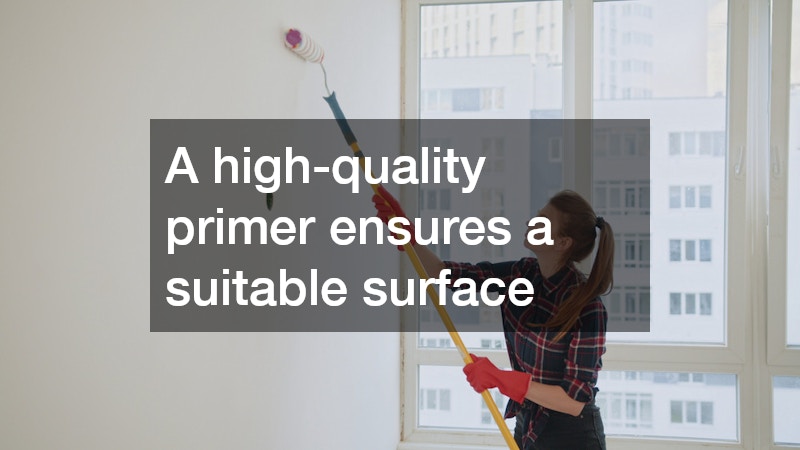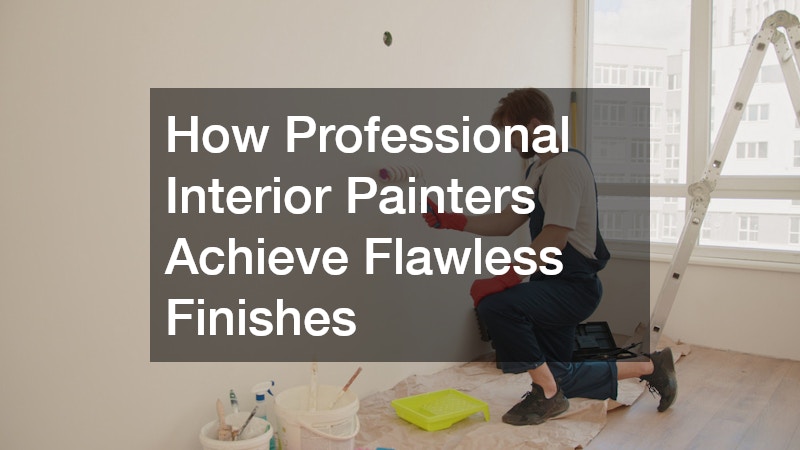Welcome to an in-depth exploration of how professional interior painters achieve those immaculate, flawless finishes that transform living spaces. We will explore the techniques, tools, and tips that these experts utilize to ensure perfect outcomes every time.
Mastering Surface Preparation for Lasting Results
Professional painters understand that the foundation of a perfect paint job is in the preparation of the surfaces. Before the first drop of paint is applied, surfaces are meticulously cleaned, sanded, and smoothed.
This includes repairing any imperfections like dents or holes with filler and ensuring that all surfaces are dust-free. Such attention to detail ensures that the paint adheres properly and lasts longer.
It’s also crucial for professional interior painters to manage environmental conditions during preparation. Factors such as humidity, temperature, and airflow can affect how well the paint sets. For instance, high humidity can lead to slower drying times and potential imperfections. Seasoned painters will know the optimal conditions for starting a job and may even use tools to control the environment within the workspace.
Tape is liberally used to protect trims, ceilings, and other unintended areas, ensuring sharp and clean edges. Covering furniture and floors is equally important to prevent accidental spills or splashes and maintain the integrity of the space being painted.
Why Airless Sprayers Deliver a Smoother, Even Coat
The use of airless sprayers in professional painting is crucial for achieving a smooth, uniform coat. Unlike traditional rollers or brushes, which rely on manual application, airless sprayers use high pressure to atomize paint, dispersing it into fine particles that adhere evenly to walls. This technology minimizes brush marks and uneven textures, promoting a flawless finish.
Another advantage of airless sprayers is their efficiency and speed, particularly over large areas. This results in a quicker turnaround, reducing the overall painting time significantly. Efficiency also extends to the ability of sprayers to handle thicker layers of paint without preliminary thinning, which is typically required with other tools.
However, mastering an airless sprayer takes skill and practice. Professional interior painters must maintain a consistent hand speed and distance from the surface to avoid runs and sags. The machine’s flow rate and pressure settings must also be calibrated depending on the type of paint and surface.
The Importance of High-Quality Primers and Paints
Using high-quality primers and paints is key to achieving lasting, vibrant finishes. Experienced interior painters opt for premium products that provide better adhesion, color retention, and durability. A high-quality primer ensures a suitable surface for the paint to bond with, which enhances the appearance and longevity of the topcoat.
Advanced formulations of primers and paints also offer superior coverage, often allowing for the use of fewer coats. This saves on both time and material costs, while still achieving optimal results. These formulations can include additives that promote a smoother application and resist common problems like cracking, peeling, and fading.
The choice between water-based and oil-based products depends on the project’s specific needs, including drying time, durability, and environmental impact. Professional painters are well-versed in selecting the right type of paint for different areas, such as high-moisture environments like kitchens and bathrooms.
Professional Cutting-In Techniques for Crisp Edges
One of the hallmarks of a professional paint job is the crisp, clean lines that define edges and corners. Cutting-in, the technique of painting these areas without getting excess paint on neighboring surfaces, requires a steady hand and a precise brush. Professional interior painters typically use high-quality angled brushes that provide control and accuracy.
There is also a strategic approach to cutting in, often involving painting edges before larger surfaces. This method allows professionals to seamlessly blend the brushwork into the rolled areas, preventing the appearance of lines caused by overlapping coats. It also minimizes the risk of smudging freshly applied paint.
The skill of cutting in is particularly important when dealing with contrasting colors on adjacent walls or in designs involving stripes or other geometric patterns. The precision of this technique significantly impacts the overall quality and aesthetics of the paint job.
Achieving a flawless finish in interior painting relies on meticulous preparation, the right materials, precise techniques, and attention to detail. Professional interior painters combine knowledge, experience, and the right tools to overcome challenges and deliver outstanding results. By understanding these methods, homeowners can better appreciate the craft of professional painting and make informed decisions for their own projects.




